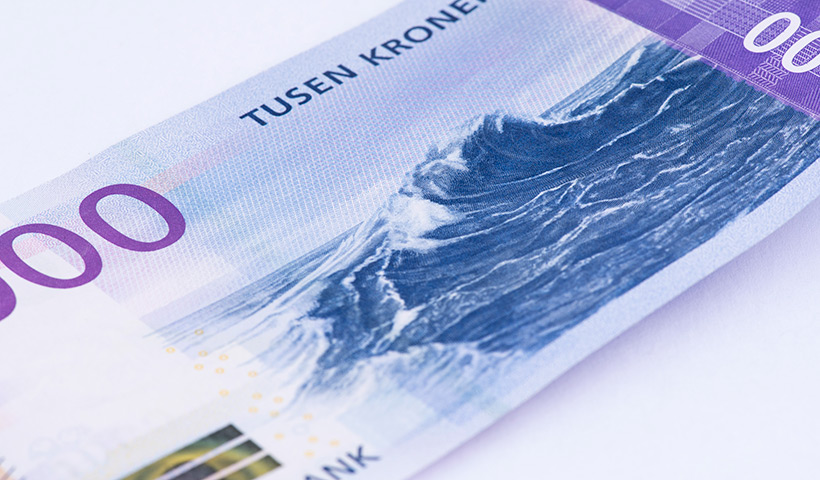Working for yourself in Norway comes with both freedom and responsibility. Here’s how freelancers and sole proprietors are taxed, what rates apply in 2025, and how to plan ahead.
Income tax is complicated in any country, but it can feel especially daunting when you decide to work for yourself in Norway.

Income tax is complicated in any country, but it can feel especially daunting when you decide to work for yourself in Norway.
Employees have the luxury of having tax and social security automatically deducted from their salary each month, with their employer handling most of the administration.
For freelancers and sole proprietors, the system works very differently. You are responsible for calculating expected profits, paying tax in advance, and keeping on top of reporting deadlines.
For anyone starting a business for the first time, this can come as a shock. Cash flow becomes even more important when you’re paying tax before you’ve even received all your income, and the paperwork can quickly pile up.
At the same time, Norway offers a well-structured framework for self-employment that, once understood, becomes manageable.
This guide explains how taxation works for the self-employed in Norway in 2025: from setting up a sole proprietorship and paying social security contributions, to understanding tax brackets, VAT registration, and advance payments.
Table of Contents
Working for yourself in Norway
The easiest way to get started is to register a sole proprietorship (enkeltpersonforetak). The paperwork is lighter than for a limited company (aksjeselskap or AS), and many freelancers choose this option in the early stages of their business.
However, there are some important trade-offs. A sole proprietorship is not a separate legal entity from its owner, which means you and your business are considered one and the same.
You are personally liable for any debts or obligations, and your business profits are added to your other personal income for tax purposes.
Unlike with a limited company, there are also fewer opportunities for tax planning. In short, the buck stops with you.
How Much Tax Do Self-Employed People Pay in Norway?
This is one of the most common questions new freelancers ask, but there’s no single income tax rate for sole proprietorships in Norway.
Unlike a limited company, which pays a flat rate of corporate tax, a sole proprietorship is not a separate legal entity. All profits are treated as your personal income and taxed together with any other earnings you may have.

In practice, this means you pay:
- Ordinary income tax at 22% (18.5% in Finnmark and Nord-Troms)
- Bracket tax (trinnskatt) at progressive rates as your income rises
- National insurance contributions (trygdeavgift) at a higher rate than employees
Income Tax on Profits
A key point to understand is that you are taxed on the entire annual profit of the business, not just what you withdraw into your personal bank account.
For example, if your sole proprietorship earns NOK 500,000 in profit, you will pay tax on the full NOK 500,000 — even if you only transfer NOK 300,000 for your personal use and leave the rest in the business account.
This is very different from a limited company. Suppose the owner of an AS makes NOK 3 million in profit. They could pay themselves a salary of NOK 500,000, taxed as ordinary employment income, and let the company pay corporate tax on the remaining profits.
The owner could then choose to defer taking dividends until later years. A sole proprietor, by contrast, must pay personal tax on the entire NOK 3 million profit that year, which pushes them into the very highest tax brackets.
Social Security Contributions (Trygdeavgift)
Another major difference comes with social security (national insurance) contributions. In Norway, these payments fund healthcare, pensions, and parental benefits.
Employees pay 7.9% in national insurance contributions, which is automatically withheld by their employer. Self-employed people must shoulder more of this burden themselves, paying 10.9% on business income.
There are some exceptions. Self-employed individuals in fishing, hunting, or childminding at home (for children under 12 or with special care needs) pay a lower rate of 7.7%. Income below NOK 99,650 is exempt from contributions altogether.

Because of this higher rate, self-employed people generally pay around three percentage points more in tax than employees with the same total income.
Advance Tax Payments
Perhaps the biggest adjustment for freelancers is the system of advance tax (forskuddsskatt). Employees have tax withheld every month, but sole proprietors must pay their estimated taxes four times a year.
When you register your business, you submit an estimate of expected annual profit. Based on this, the Tax Administration issues four invoices across the year. After you file your tax return, any differences are settled the following summer.
In subsequent years, advance tax is usually based on the previous year’s income. However, if you expect to earn significantly more or less, you can submit an updated estimate during the year to avoid a nasty surprise later.
This system can be a shock to those unused to it. You may find yourself paying a large tax bill before you’ve actually received all your income, which can cause cash flow problems. Many new business owners trip up in their first year when advance tax falls due before real profits have materialised.
For this reason, it’s wise to set aside around 40% of your profits as they come in. It’s also a good idea to speak with an accountant, at least in your first year, to make sure your estimates are accurate and your obligations are covered.
Even if you prefer to handle your own bookkeeping, professional advice at the start can save you stress and money later on.
Example: Tax on NOK 500,000 Profit in 2025
Let’s say your sole proprietorship earns NOK 500,000 in profit in 2025, with no other income. Here’s how the tax breaks down:
- Ordinary income tax: 22% of 500,000 = NOK 110,000
- Bracket tax (trinnskatt):
- 1.7% on income from 217,401 to 306,050 ≈ NOK 1,500
- 4% on income from 306,051 to 500,000 ≈ NOK 7,800
- Total bracket tax = NOK 9,300
- National insurance contributions (trygdeavgift): 10.9% of 500,000 = NOK 54,500
Total tax bill = approx. NOK 173,800. That works out to an effective tax rate of around 35% on your profit.

If your profit were much higher, say NOK 1,000,000, the higher bracket tax rates would kick in, pushing the effective tax rate closer to 45%.
💡 Rule of Thumb: If you’re self-employed in Norway, a good habit is to set aside around 40% of your profits as they come in. This usually covers income tax, bracket tax, and national insurance contributions. If your income is higher, you may need to set aside more, but 40% is a safe starting point to avoid unpleasant surprises when advance tax is due.
Other Tax Considerations for the Self-Employed
Understanding income tax, bracket tax, and social security is the core of managing your finances as a freelancer in Norway. But there are a few other elements worth keeping in mind.
Wealth Tax (Formuesskatt)
Norway levies a tax on personal wealth in addition to income. In 2025, if your net assets exceed NOK 1.76 million (for individuals) or NOK 3.52 million (for married couples), you may be liable for wealth tax.
Wealth tax is made up of both municipal and state components. Municipalities charge 0.525%, while the state adds 0.475% on net wealth above the threshold.
For very high net wealth (more than NOK 20.7 million) the state rate increases to 0.575%. That means the combined maximum rate in 2025 is about 1.1%.
For sole proprietors, business assets are included in the wealth calculation, though some discounts may apply to shares and certain types of property. If you are building significant savings or investing in valuable equipment, it’s worth checking how this might affect your annual tax bill.
VAT Registration
If your turnover exceeds NOK 50,000 in a rolling 12-month period, you must register for VAT (merverdiavgift).
This means charging VAT on invoices, filing VAT returns, and paying the collected VAT to the government. The upside is that you can also deduct VAT paid on business expenses, which can significantly reduce costs.
Deductions and Allowances
As with all taxpayers, the personfradrag (personal allowance) and minstefradrag (standard deduction) apply to sole proprietors. In addition, you can deduct legitimate business expenses such as office supplies, professional software, travel, and even part of your rent if you run a home office.
When to Consider a Limited Company
Once your profits grow, the advantages of a limited company (aksjeselskap or AS) become more apparent. Unlike a sole proprietorship, an AS is a separate legal entity, meaning your liability is limited and you can keep profits inside the company.
This gives you more flexibility in tax planning, as you can choose how much salary and dividends to take each year. For some freelancers, making the switch to an AS can reduce their effective tax burden while also offering legal protection.
International Aspects
If you are a foreign national running a business in Norway, your tax liability depends on whether you are considered tax resident. Generally, if you live in Norway for more than 183 days in a year, or 270 days over a three-year period, you are deemed resident and taxed on worldwide income.
Norway has double taxation treaties with many countries, designed to prevent you from paying tax twice on the same income.
If you work with clients abroad, or split your time between Norway and another country, it’s important to check how these treaties apply to your situation. In more complex cases, professional advice is essential.



Hi David,
thanks for the article.
Considering moving to Norway and working remotely I would have to register as self-employed for the tax purpose.
I couldn’t find this information anywhere, so maybe you could know. If you are self-employed in Norway you pay 11.4% social contribution. Is that the total amount of social contributions you have to pay or you are still required to pay employer social contributions on top of that?
Asking because in Sweden as self-employed you have to pay employee and employer social contributions as technically you are your own employer, which ends up as a very high amount in that scenario.
Thanks,
Robert
Hi, yes as it says in the article this is what you pay. Self-employed people pay a higher contribution than a regular employee because there is no employer’s contribution.
Hi David,
Thank you for your inputs here.
We are from the Philippines. My son and I are moving to Norway for family immigration because my husband holds a residence permit to work there. I am working remotely so I am planning to register as self-employed for tax purpose. Can I just ask, will I get the benefits of a permanent resident like free education for my son, and future child etc? I am torn to let go of my job as I already get used to be working with them, or just look for a job in Norway to get benefits.
Thanks,
Cris